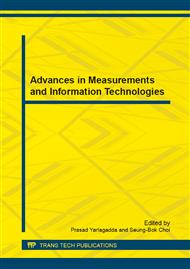p.429
p.434
p.443
p.447
p.452
p.456
p.463
p.467
p.472
Simulations of Linearity of Buffon’s Needle Problem
Abstract:
The expected number of crossings of Buffon's needle problem is linear if the distance d between the lines of the ruled paper is less than or equal to the length l of the needle. With the help of Dynamic Geometry Super Sketchpad software, two vivid simulations of the linearity of Buffon's problem are given, that is, the expected number E(l ) satisfies E(x+y) = E(x) + E(y) and E(rx) = rE(x).
Info:
Periodical:
Pages:
452-455
Citation:
Online since:
February 2014
Authors:
Keywords:
Price:
Сopyright:
© 2014 Trans Tech Publications Ltd. All Rights Reserved
Share:
Citation:


